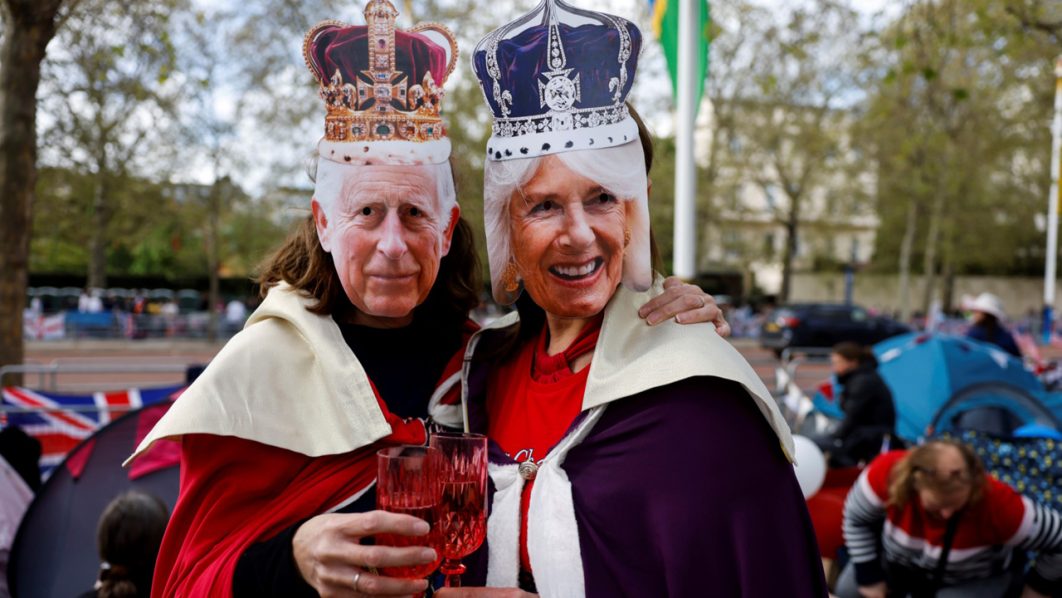
Charles III will be crowned king on Saturday in a solemn Christian ceremony steeped in 1,000 years of history and tradition, but adapted to reflect 21st-century Britain.
St Edward’s Crown — a solid gold, sacred symbol of the monarch’s authority used only once in their reign — will be placed on Charles’s head at 1100 GMT to cries of “God Save the King”.
Trumpet fanfares will sound through London’s Westminster Abbey and ceremonial gun salutes will blast out across land and sea to mark the first coronation of a British monarch since 1953 — and only the fifth since 1838.
Bells will peal in celebration at churches across the land, before liveried soldiers on foot and horseback stage a 7,000-strong military parade stretching through the streets of the capital.
Some 5,000 of those troops arrived by train at Waterloo Station shortly after dawn before marching over Waterloo Bridge, giving London’s early risers a taste of things to come.
King Charles and his wife Camilla, who will be crowned queen, will return to Buckingham Palace in the rarely used horse-drawn Gold State Coach past huge crowds, before watching a ceremonial fly-past from the balcony.
The coronation — the first of a king since 1937, only the second to be televised and the first in colour and streamed online — is the religious confirmation of Charles’s accession.
Charles, 74, has been king since the death of his mother Queen Elizabeth II in September last year after seven decades as her heir apparent.
– Changes –
Much of the two-hour Anglican service, led by the Archbishop of Canterbury Justin Welby, would be recognisable to the 39 other monarchs crowned at Westminster Abbey since 1066.
But while many of the intricate rituals and ceremony to recognise Charles as his people’s “undoubted king” remain, the king has sought to bring other aspects of the service up to date.
There are women bishops for the first time, while leaders of Britain’s non-Christian faiths and its Celtic languages will play a prominent role.
As king, Charles is supreme governor of the Church of England but heads a more religiously and ethnically diverse country than the one his mother inherited in the shadow of World War II.
He has also sought to make the 2,300-strong congregation more reflective of British society, inviting ordinary members of the public to sit alongside heads of state and global royalty.
In another change, the coronation themes mirror his lifelong interest in biodiversity and sustainability.
Seasonal flowers and foliage from the wind-battered Isle of Skye in northwest Scotland to Cornwall at the tip of England’s southwest coast, will fill the abbey.
Single-use plastic and floral foam have been banned and all the flowers will be donated to charities helping the elderly and vulnerable.
Ceremonial vestments from previous coronations will be reused, and the anointing oil will be vegan.
Follow our socials Whatsapp, Facebook, Instagram, Twitter, and Google News.








